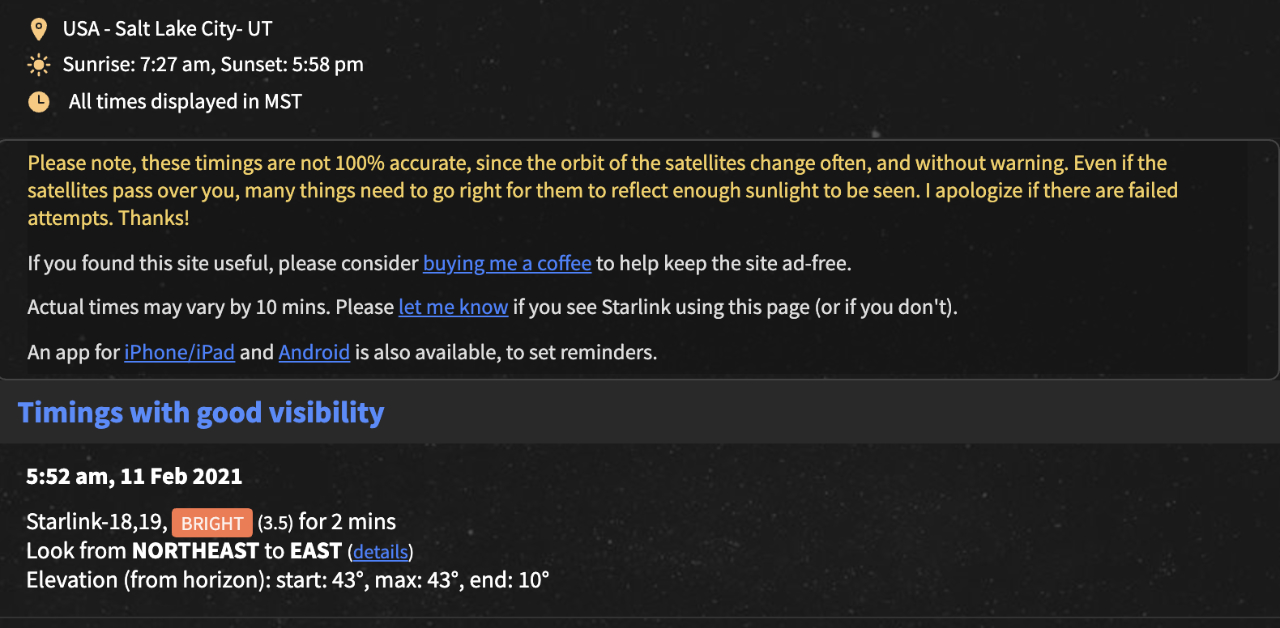UFOs over Utah? Elon Musk project mistaken for extraterrestrial visitors

SALT LAKE CITY (KTVX) – Reports of a line of UFOs seen flying in Utah’s stormy skies started circulating around 5:30 a.m. Thursday.
With storm clouds rolling in that morning, did people really see something? Yes, yes they did.
Jennifer Campbell, who lives in a suburb outside of Salt Lake City, shared a video of the phenomenon, recalling, “Early in the morning, I saw them flying in a straight line, there was a fleet of them flying over the mountains.”
Are they aliens? Probably not.
Salt Lake City sister station KTVX spoke with meteorologist Adam Carroll about what Campbell might have seen. “There was a lot of cloud cover with the approaching storm,” Carroll said. “We should call the Air Force first.”
There are night flying operations in the area that are going on through April, but could it have been a squadron of high tech Air Force F-35s?
An Air Force spokesperson at Hill Air Force Base’s 388th Fighter Wing said, “We were not flying this morning; maybe it was the Starlink Satellites?”
Starlink Satellites help provide internet service around the earth. They are a project of Elon Musk’s and have been being placed in the sky by SpaceX. Because the satellites catch reflections from the sun, they can appear to be a new constellation — or UFOs — as they pass by.
But were they over Utah early this morning? The answer is yes.
A website recommended by SpaceX for tracking the satellites says they were right over the area Thursday morning.
The website said you could see them for two minutes and the status was “bright.”

The Starlink satellites have been causing UFO reports since they were dispatched into orbit, and the number of sightings will likely grow as the Elon Musk’s high-speed internet service expands.
The company projects that the high-speed, low latency broadband internet will achieve “near global coverage of the populated world” in 2021. Starlink says its satellites are 60 times closer to the Earth than traditional satellites, and can provide fast internet to remote areas without traditional ground infrastructure.
Starlink says the company is working with the National Academy of Sciences and leading astronomers to reduce the satellites’ visibility in the night sky.
Suggest a Correction
*** This article has been archived for your research. The original version from WGN TV Chicago can be found here ***


